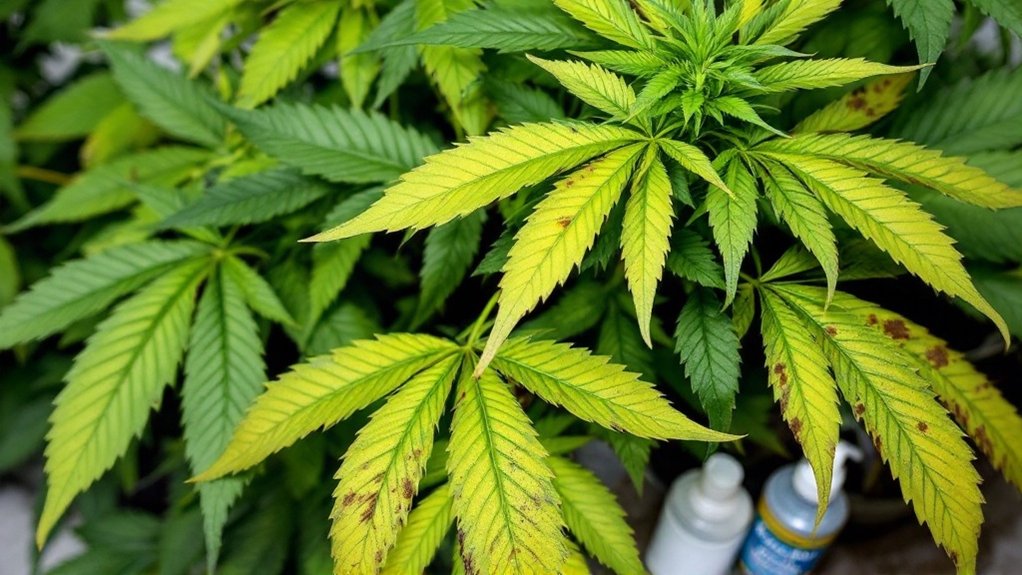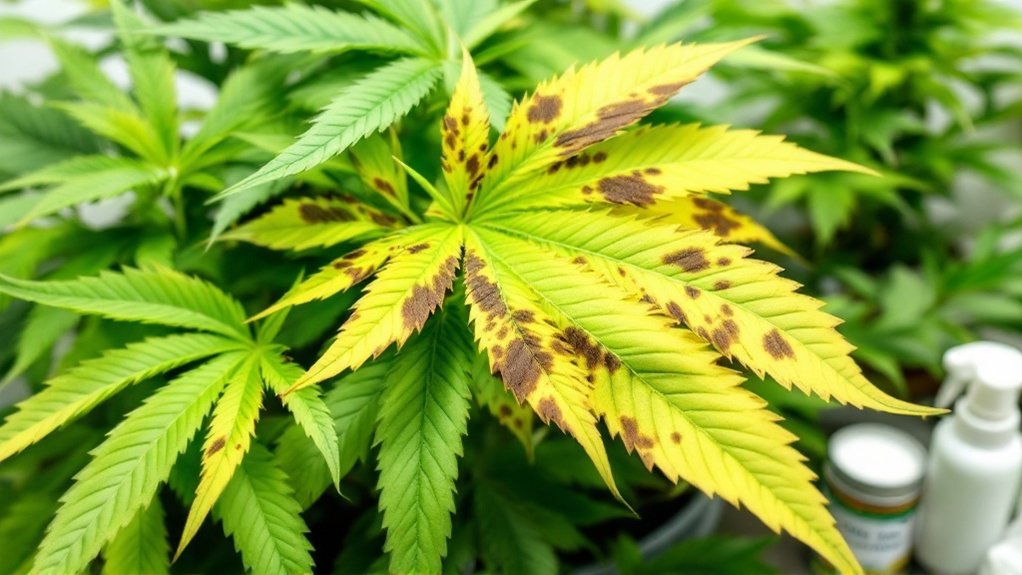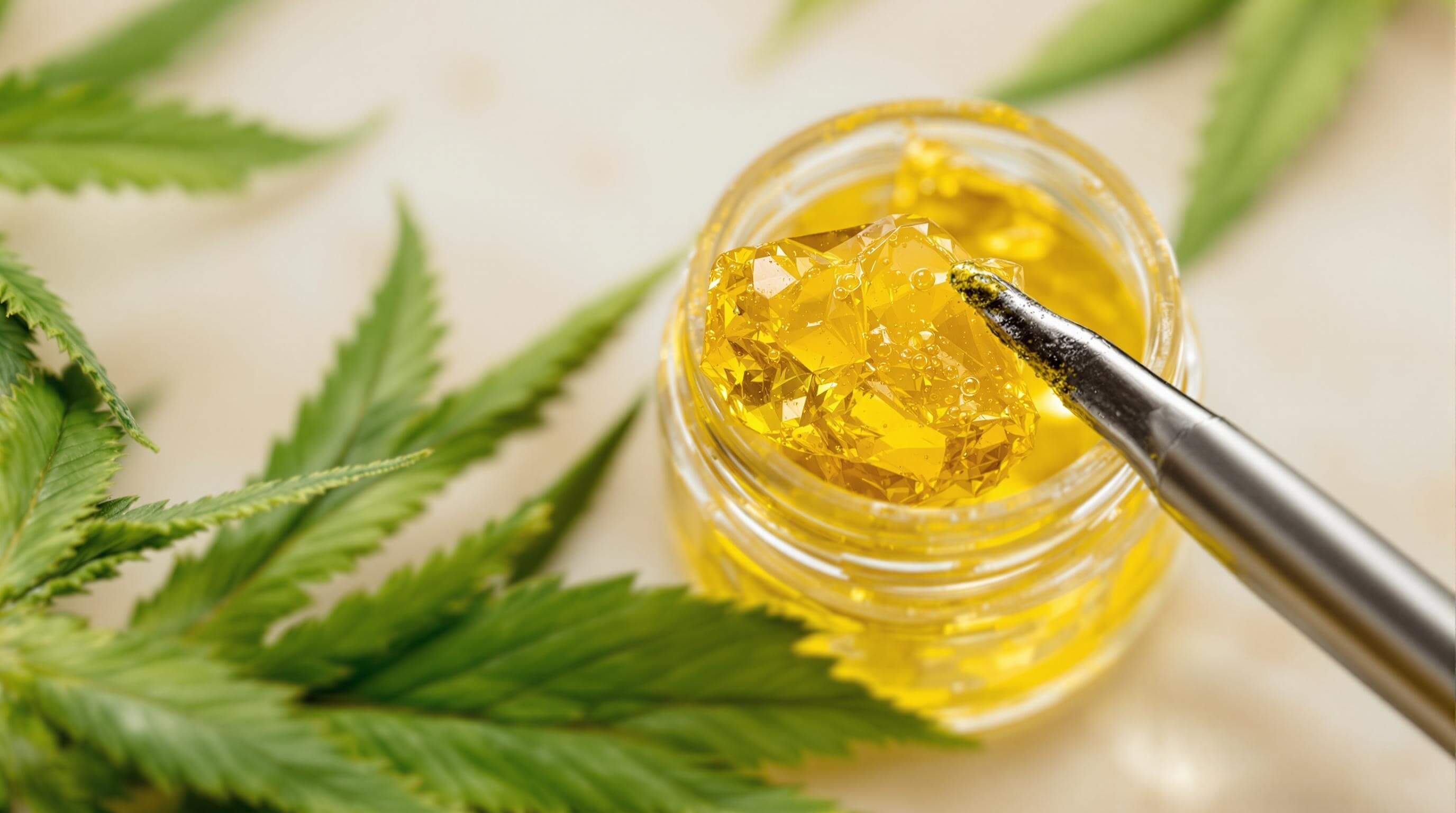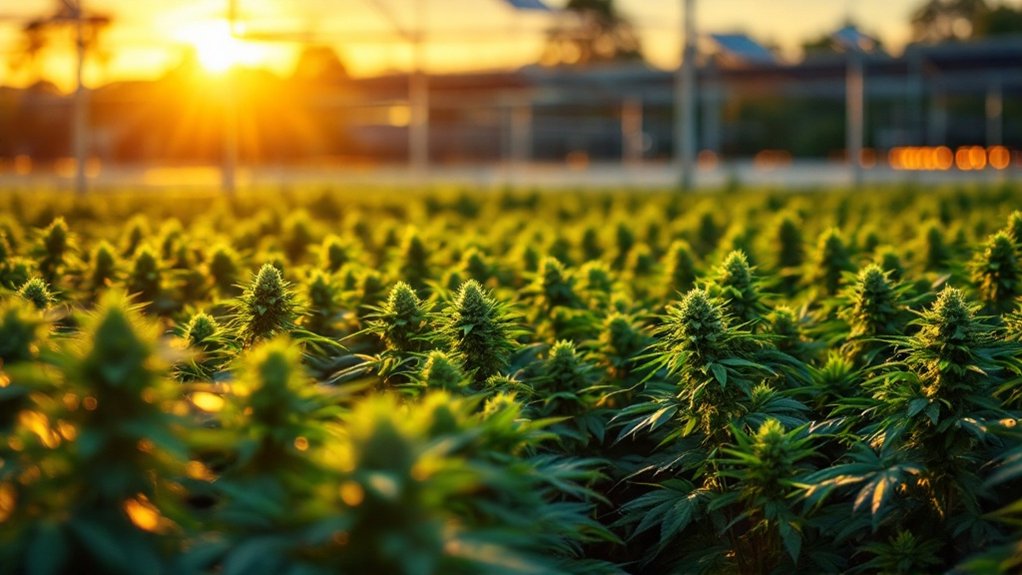Magnesium deficiency in cannabis manifests as interveinal chlorosis, with yellowing between leaf veins primarily on older leaves first. This vital nutrient serves as the central atom in chlorophyll, making it essential for photosynthesis and energy production. When deficient, plants develop poor root systems, struggle to flower properly, and produce lower yields with diminished cannabinoid content. Effective solutions include adjusting pH to 6.0-6.5, supplementing with Epsom salts, and maintaining proper nutrient balance to prevent recurring deficiency issues.

Numerous cannabis cultivators encounter magnesium deficiency, a common nutritional disorder that greatly impacts plant health and productivity. This deficiency manifests visually as light green or yellow coloring along the veins and edges of lower leaves, followed by interveinal chlorosis where tissues between the leaf veins turn distinctly yellow. As the condition progresses, affected leaves develop yellow spots that eventually turn brown, sometimes accompanied by rust-colored spots in advanced stages. These compromised leaves ultimately turn completely brown and drop from the plant, diminishing the plant’s photosynthetic capacity.
Magnesium plays a critical role in photosynthesis, serving as the central atom in chlorophyll molecules. Without sufficient magnesium, chlorophyll production decreases considerably, impairing the plant’s ability to convert light energy into chemical energy. This disruption creates a cascading effect where energy production becomes limited, stunting overall growth and development. The deficiency typically begins in older, lower leaves before progressively moving upward through the plant, following a distinctive interveinal pattern that distinguishes it from other nutrient deficiencies.
Magnesium deficiency cripples photosynthesis at its core, creating a domino effect of stunted growth that travels upward through cannabis plants.
Beyond photosynthesis disruption, magnesium deficiency interferes with broader nutrient absorption. It specifically prevents proper uptake of nitrogen and phosphorus, potentially triggering multiple deficiencies simultaneously. The substrate pH greatly influences this dynamic, as excessively acidic growing media can block roots from absorbing available magnesium despite its presence. Experienced growers using Coco Coir substrate are particularly vulnerable to this deficiency unless supplemental magnesium is provided regularly. Ironically, adding excess magnesium as a correction measure can worsen the situation by creating imbalances that lock out other essential nutrients.
The developmental impacts become increasingly severe as the deficiency persists. Plants develop insufficient root systems, struggle to reach flowering stage, and produce smaller, unhealthy flowers if they flower at all. This compromised development directly affects yields, with reduced bud development and diminished production of essential oils and cannabinoids. The weakened state also leaves plants more susceptible to pests and diseases, compounding the negative effects.
Environmental factors considerably influence magnesium availability. Excessive flushing or overwatering can leach magnesium from the growing medium, while high-light environments increase plant demand for this nutrient. Container size also matters, as smaller containers deplete available magnesium more rapidly. Utilizing a foliar spray of Epsom salts dissolved in water provides a quick-fix solution that can immediately address magnesium deficiency while longer-term corrections are implemented.
These various factors must be considered when addressing deficiencies, as understanding the environmental triggers allows cultivators to implement more effective and sustainable solutions.
Frequently Asked Questions
Can Magnesium Supplements Burn Cannabis Plants if Overapplied?
Yes, magnesium supplements can burn cannabis plants when overapplied. Excessive magnesium concentrations above 140 mg/L can cause leaf scorch, appearing as brown tips and edges on foliage.
This toxicity disrupts the plant’s ability to uptake calcium and potassium, creating nutrient imbalances that compound health problems. The resulting competitive inhibition leads to secondary deficiencies, despite sufficient nutrients being present in the growing medium.
Symptoms typically appear first in older leaves.
How Does Magnesium Interact With Other Nutrients in Cannabis Soil?
Magnesium interacts with multiple nutrients in soil through both synergistic and antagonistic relationships. It competes directly with calcium, potassium, and ammonium for uptake sites on plant roots, potentially causing deficiencies when imbalanced.
Conversely, magnesium supports phosphorus metabolism and transport throughout the plant. Soil pH greatly influences these interactions, with optimal magnesium availability occurring between 6.0-7.0.
The ideal calcium-to-magnesium ratio in cannabis cultivation is typically 3:1 to 5:1, ensuring proper nutrient balance and preventing competitive uptake issues.
Are Certain Cannabis Strains More Susceptible to Magnesium Deficiency?
Cannabis strains exhibit varying susceptibility to magnesium deficiency based on their genetic makeup.
Varieties with higher chlorophyll production demands and those bred for rapid growth typically require more magnesium than landrace strains.
Sativa-dominant plants often display more pronounced interveinal chlorosis when deficient due to their higher photosynthetic activity.
Strain-specific differences in magnesium utilization affect how quickly deficiency symptoms appear, with genetics influencing both in-planta storage capabilities and nutrient remobilization efficiency from older to newer tissues.
What’s the Ideal Water Ph for Maximum Magnesium Absorption?
The ideal water pH for maximum magnesium absorption falls between 5.8 and 6.5.
This slightly acidic range maintains magnesium in forms that are readily bioavailable.
At pH levels above 7, magnesium begins forming less soluble compounds like magnesium carbonate.
When water pH reaches the best range, absorption efficiency can increase by around 15-20%.
Regular pH testing is essential, as factors like water source and treatment methods can greatly alter magnesium availability in irrigation water.
Do Indoor and Outdoor Cannabis Plants Require Different Magnesium Treatment Approaches?
Yes, indoor and outdoor cannabis plants require different magnesium treatment approaches.
Indoor environments typically need more frequent supplementation through Epsom salts or Cal-Mag products due to limited medium volume and controlled feeding schedules.
Outdoor plants benefit from slower-release amendments like dolomitic lime, which complement natural soil processes.
Environmental factors also influence treatment timing—indoor deficiencies can be addressed immediately with foliar sprays, while outdoor treatments must account for weather conditions and natural soil buffering capacity.









